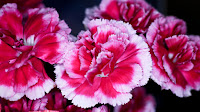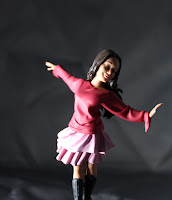This hit me like a brick, I had never heard that phrase before, nor thought about street photography in that way. However the more I thought about it the more the phrase made sense.
When you look at the street scene that you are try to shoot, or are looking for interesting things to shoot, it really does look like a primitive form of a ballet. Cars trying to avoid other cars, cars trying to avoid people, people trying to avoid people. Everything is moving in a huge choreographed dance, a beautifully awkward dance where everyone isn't completely sure of where they are supposed to be, where their "marks" are, or where their "partners" in the dance are going. Throw in lighting, shadows and colours/shades (depending on if you are shooting color or black & white) and you have an amazing "Ballet of the Street" that you as the photographer are trying to capture.
When you look at the scene you are trying to shoot, you can look at the main subjects of your photo as the "Lead Dancers" of the ballet. The people or things around them as the background dancers and the street itself as the scene props and backdrops, or even as the understudies to the "stars" of the scene.
You as the photographer can be thought as the orchestra director, or the choreographer or director of this amazing ballet that is the scene in front of your camera. And the people who look at your pictures are the audience in attendance of the ballet.
Some "ballets" become famous, some have a limited run. The same goes for a street photograph. A few become legendary, but the vast majority of them are never seen or if they are they go unappreciated by the masses. We can only strive to become the most accomplished "choreographers" we can, to capture the best "ballets" that we can. I may never look at Street Photography in the quite same way again.














